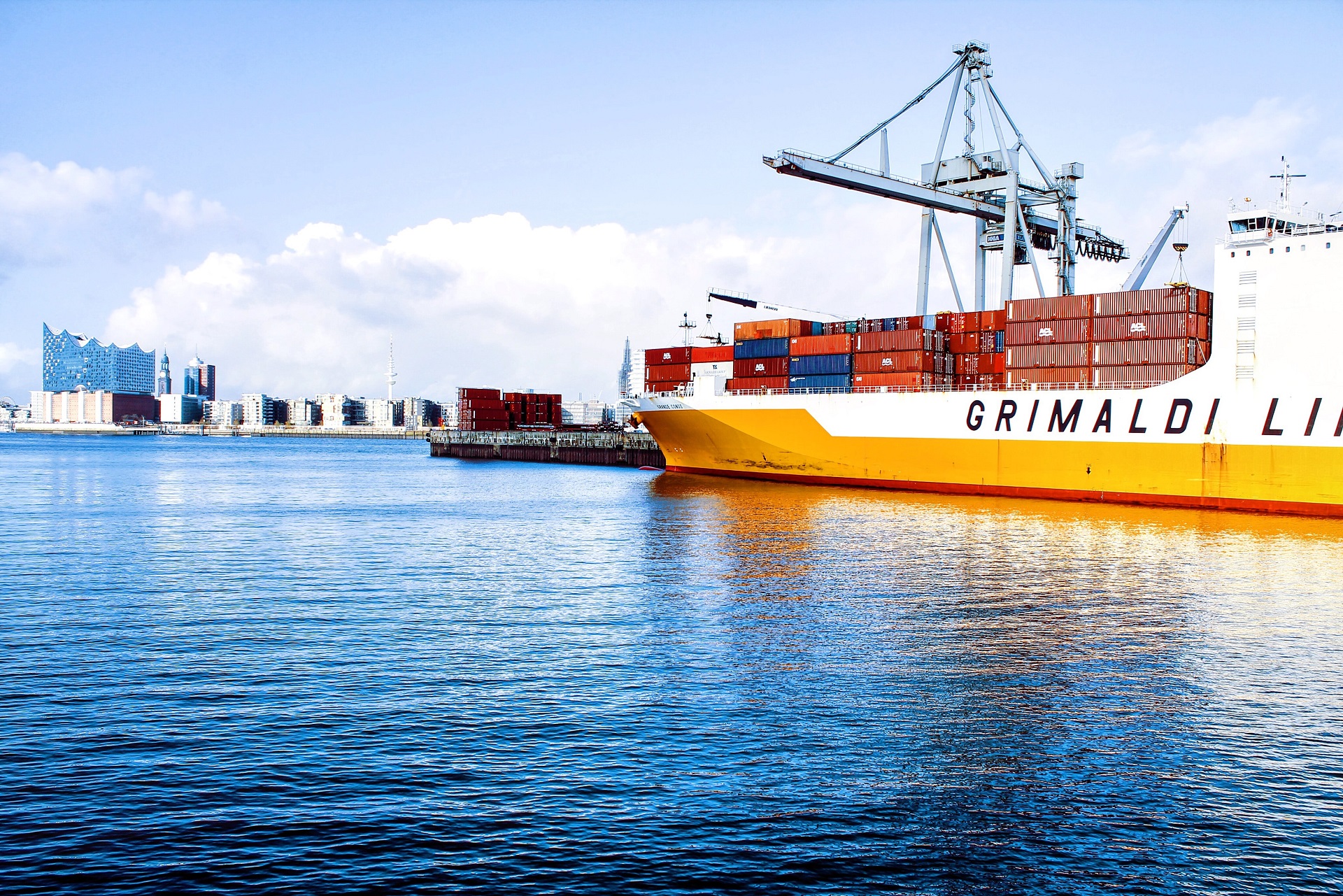
An Introduction to Ocean Freight Management
February 2, 2023 - Revolutionized Team
Revolutionized is reader-supported. When you buy through links on our site, we may earn an affiliate commision. Learn more here.
Ocean freights transport most of the world’s goods with ships and ports. Shipping industries around the globe are constantly in flux, depending on supply and demand, natural and climate-related influences and trade agreements.
How do ocean freights work, and how are they managed? Of the four main types of freight transportation, does ocean beat rail, ground and air? Access to raw materials would be scarce, and luxuries like phones would only be available in certain parts of the world if it weren’t for ocean freight shipping.
How Ocean Freights Operate
Ocean freight, referring to any good or product shipped over the world’s waterways, uses large ships to take products to ports. Ocean freight is ideal for shipping for many reasons. Still, each buyer must consider their unique circumstances, such as how much they’re purchasing and location accessibility.
Ocean shipping works synergetically with intermodal transportation methods. This is a shipping method utilizing shipping containers that are easily organized and transported between different modes of transportation, such as from a ship to a train.
The beauty of intermodal transport is it can be fully automated with various cranes. Each is programmed to move and stack the shipping containers on a schedule, perfectly timed for ships docking to load their cargo. Humans operating machines are also safer, since they can operate cranes remotely.
Another benefit to ocean freight shipping is responsible parties are strictly defined:
- Consignee: The party receiving the shipment.
- Shipper: The party who owns the cargo.
- Carrier: The party operating the ship transporting the cargo.
- Freight Forwarder: The party scheduling logistics like picking up the cargo and putting it on its next voyage, usually ground transportation like truck or rail.
- Customs: Each country’s customs department will help determine duties, taxes and tariffs for the goods.
An invoice-style document known as an Ocean Bill of Lading outlines what each of these parties is entitled to or responsible for, making the communications process across nations more streamlined.
There are different types of marine freight for various purposes. Cargo shippers may purchase entire containers or portions of containers for shipments, referred to as full container loads (FCLs) and less than container loads (LCLs), respectively. Roll On Roll Off, or RORO, refers to road vehicles like semi-trucks that are placed entirely in containers. There are a few bulk options, such as dry and break bulk, which determines the contents of the containers. Not all these options would not be available for planes, making ocean freight highly versatile.
Why Choosing Ocean Freights May Be Ideal for Shipping
Besides ocean freights allowing buyers versatility, it could be ideal for shipping for being potentially cheaper than air travel, depending on the cargo. Larger shipments are more affordable by the ocean, as shipping many heavy containers in the air adds up quickly.
However, suppose you’re looking to ship smaller packages. In that case, air travel may be appropriate — or you could get an LCL on ocean freight. Ocean freights hold more weight than any other freight transport.
Because of this, choosing ocean freight is more fuel-efficient, especially as boating technologies continue to advance and ports progress into greener infrastructure. There are a few factors in play that make ocean freights better on fuel:
- Travel times are getting shorter: Ocean freights, measured in gross moves per hour (GMPH) and berth moves per hour (BMPH), are increasing in speed. The total containers offloaded (GMPH) are divided by how many hours the ship is at the dock (BMPH). This is speeding up with the help of automated technologies and advancements in intermodal shipping.
- Shipbuilders are bringing back sails: From inflatable sails to sails that look like airplane wings, ocean freights are returning to seemingly antiquated ways. They want to take advantage of wind again, making ships faster and using less fuel than ever.
- Organizations are creating better regulations: The Federal Maritime Commission and the International Maritime Organization by the United Nations aim to instill more rigid rules on fuel usage and implement emissions control areas.
With the planet in mind, the ocean may also be the best option for the environment. Progress is always happening, and the carbon footprint per load via ship is already less than any other form of freight. Controlling ocean acidification, pollution and making greener ports will only add to its environmental benefit.
Why Ocean Freight Management Matters
There are finances, delivery windows and ecological impacts when considering optimizing and managing ocean freight operations. In short, ocean freight management encompasses organizing the logistics. Where are the goods going? Who is purchasing them? How will they be insured?
Lucky for shippers and carriers alike, the freight management process is getting easier as technology advances. Even intermodal shipping enhancements like using the cloud to monitor container stacking priorities keep businesses on track for prompt deliveries.
There is also the matter of finances. Arguably the most crucial aspect of the financials in ocean freight shipping is incoterms. The International Trade Administration instills these designations. Each of the 11 incoterms specifies who is responsible for paying and managing various elements of the shipment throughout the process.
Some incoterms require insurance, while others don’t. Some make the cargo the responsibility of the seller until it hits the buyer’s port — others don’t. Incoterms encapsulate fine details like formalities of inspections, import duties and taxes, and how the cargo is unloaded and delivered. Knowing which incoterm to use for each shipment is critical for a successful delivery.
The most particular aspect of ocean freight shipping is the constant fluctuations in pricing. The reason this occurs is that there are many variables to determine shipping costs:
- What the cargo is
- How far it’s traveling
- Exchange rates for currency
- Environmental impact
- Peak seasons
This only includes a few of the potential financial shifts. An essential part of ocean freight management is being able to navigate them with adaptability, ensuring customers and employees remain unaffected.
Other fees and surcharges add up as well, including dock, administrative, security and customs clearance fees to worry about — however, these are mostly constant.
The Basics of Ocean Freight Management
Once you understand the parties involved and how it could benefit the shipping industry, ocean freight becomes less complicated. The intricacies arise as the industry always attempts to improve, whether for the planet, efficiency or cost. Elements of excellent ocean freight management include what every shipping industry should focus on — attention to detail, regulations and the satisfaction of customers.
Revolutionized is reader-supported. When you buy through links on our site, we may earn an affiliate commision. Learn more here.




